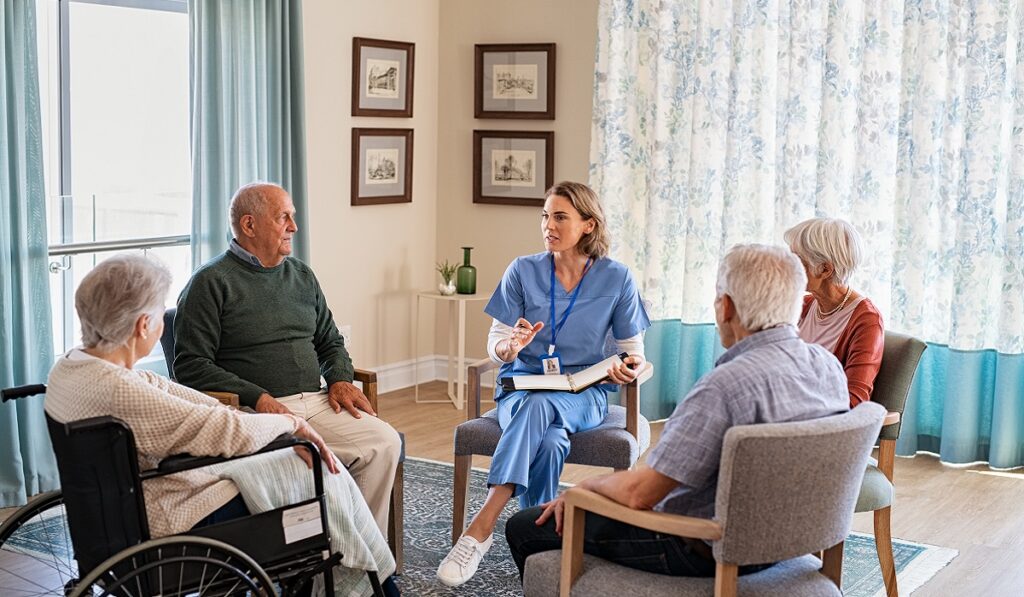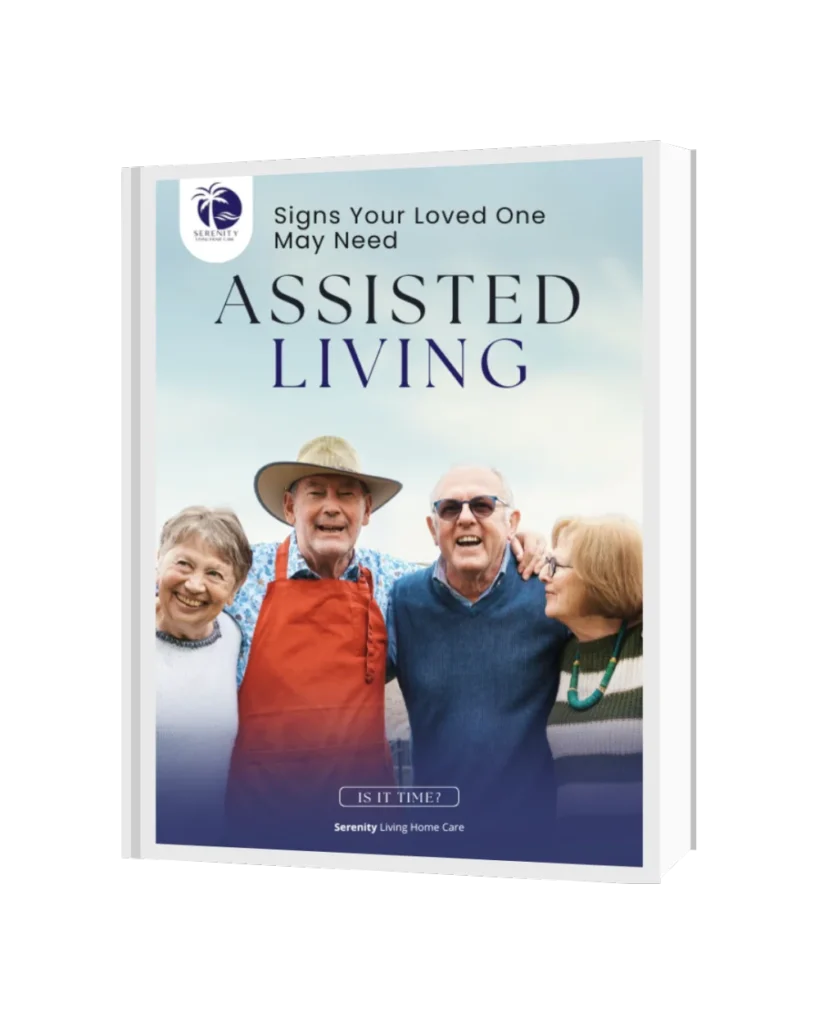Watching a parent or loved one slowly need more support is a difficult and uncertain journey. Maybe they’re skipping meals, feeling more isolated, or needing reminders for daily routines. These aren’t always urgent crises, but they are real signs that things are changing—and they often mark the beginning of needing to explore the different types of care for seniors.
This is when families start asking: What now? Is it time for in-home help? Is assisted living the right move? What kind of care fits—not just today, but for the future?
According to studies from the National Institute on Aging, having the right support in place can help older adults stay safer, avoid unnecessary hospital visits, and maintain a better quality of life. This guide is here to help you think clearly and move forward. We’ll walk through the most common senior care options, how they differ, and what truly matters when making this decision.

Key Takeaways
- Types of care for seniors depend on the level of support needed each day.
- Assisted living can provide daily help while respecting independence.
- Planning ahead prevents rushed decisions during emergencies.
- You’re not alone—real, helpful solutions do exist.
Why “Care” Looks Different for Every Senior
No two older adults need exactly the same kind of support. That’s why making a decision based on age alone often leads to frustration. What truly matters is how an individual is managing their daily life.
Some people remain active and independent well into their 80s. Others might begin needing help earlier, especially if they’re dealing with health issues, memory loss, or the emotional effects of losing a partner. Often, families don’t realize how much support they are providing behind the scenes—until caregiver burnout becomes overwhelming.
When thinking about the types of senior care, it helps to focus on the day-to-day details. Are meals being skipped? Are bills piling up? Are medications being forgotten? These are all indicators that a person may be struggling with what professionals call Activities of Daily Living (ADLs)—essential tasks like bathing, dressing, preparing meals, and managing a routine.
Understanding these changes early helps families build a realistic care plan and find peace of mind, knowing their loved one is supported in a way that truly fits.
What Are the Main Types of Care for Seniors?
There’s no one-size-fits-all approach to care. Here’s a clear look at the most common types of senior care and what each one includes.
| Type of Care | What It Offers |
| In-Home Care | A paid caregiver visits the senior’s home to assist with activities of daily living like bathing, dressing, meal prep, and reminders. Flexible scheduling, often a few hours a day. |
| Assisted Living | A residential setting with 24/7 support, meals, social activities, housekeeping, and help with personal care. Encourages independence while offering safety and community. |
| Memory Care | A secure, structured environment for seniors living with dementia or Alzheimer’s. Staff are trained in cognitive care and redirection. Includes help with routines and safety monitoring. |
| Skilled Nursing | Clinical care from licensed nurses for those recovering from illness or managing chronic conditions. Often includes rehabilitation services such as physical or occupational therapy. |
How to Choose the Best Option for Your Family
Choosing the right care is a personal decision that balances a loved one’s independence with their need for safety and support. Each option serves a distinct purpose.
- In-Home Care is often suitable for individuals who need assistance for only a few hours a day and can otherwise manage safely in their own home.
- Memory Care is a specialized necessity for those with significant cognitive decline who require a secure and structured environment to prevent wandering and provide specialized cognitive support.
- Skilled Nursing is essential for individuals with complex medical conditions that demand round-the-clock clinical oversight and is often a short-term solution for rehabilitation.
For many families, Assisted Living offers the most balanced solution. It combines 24/7 support, social engagement, and personal care in a residential setting that promotes independence. This blend of community, safety, and tailored assistance makes it an ideal environment for seniors who need consistent support but want to continue living an active and fulfilling life.
Why Assisted Living Fits More Families Than You Think
When people hear “assisted living,” they often imagine a place that feels cold or institutional—but that’s far from today’s reality. Many assisted living communities, like Serenity Living, feel more like a warm, welcoming home than a facility. Still, many families wait too long to consider it, believing they should keep doing everything themselves, or that home care will always be enough.
But the truth is, as care needs grow, the limits of in-home help become clear. Most home care services are part-time, and family caregivers can’t be there 24 hours a day. A study from the National Center for Health Statistics reveals that among residents in care communities, 75% need help with bathing and 62% need assistance with three or more activities of daily living, highlighting how care needs can often extend beyond what part-time home care or family members can provide.
That’s where assisted living steps in—not to take over, but to fill the gaps in a way that supports the whole family.
Assisted living provides:
- 24/7 assistance with bathing, dressing, grooming, medication reminders, and personal care
- Private and semi-private rooms, allowing for comfort and privacy
- Healthy, home-cooked meals, snacks, and hydration support
- Daily housekeeping, laundry, and linens taken care of by staff
- High staff-to-resident ratio, so care is personal, not rushed
- Enriching activities that support social and emotional well-being
This type of setting gives older adults the help they need with activities of daily living, without losing the routine and comfort they’re used to. It’s one of the few services for older adults that supports both safety and independence—offering peace of mind for everyone involved.
Social and Emotional Benefits of Assisted Living
When families consider care, they often focus on physical needs—like help with medications or meals. But one of the most overlooked aspects of aging is emotional health. Loneliness and isolation can impact older adults just as much as any medical condition.
This is where a community setting like assisted living does something in-home care often cannot: it provides built-in connection.
In a residential setting, seniors are part of a small, caring community. Meals are shared, activities are encouraged, and small moments—like a walk outside or a card game—become part of a meaningful daily routine again.
This kind of environment can:
- Improve mood and reduce feelings of isolation
- Restore a sense of purpose and daily structure
- Encourage physical activity and mental stimulation
- Give family members peace of mind that their loved one is not only safe, but seen and valued
These benefits are often the difference between a person merely surviving and truly living well.
What Makes Serenity Living Different
Not every assisted living home is the same—and that matters more than most people realize. When families start researching types of care for seniors, many expect a hospital-like setting, strict schedules, or a place where residents are treated like patients. But that’s not what Serenity Living is.
Located in Palm Beach Gardens, Serenity Living is a small, private residential care home that blends skilled support with the feeling of home. With only six residents at a time, the focus is on comfort, calm, and connection—not on routines that feel clinical or rushed.
Here’s what sets Serenity Living apart:
- A high staff-to-resident ratio, which means caregivers have the time to truly know each resident—their routines, their preferences, and their personalities.
- 24/7 assistance with daily needs, including bathing, dressing, mobility support, and medication reminders, always provided with respect and patience.
- Home-cooked meals made daily with attention to nutrition and individual needs, plus snacks and hydration throughout the day.
- Peaceful surroundings, perfect for older adults who no longer want the noise or intensity of larger facilities.
- Daily housekeeping, laundry, and linens, so residents—and families—don’t have to worry about small tasks piling up.
- Activities that support mental, emotional, and social well-being, from simple group conversations to light movement, puzzles, or time outdoors.
But beyond the features, what really makes Serenity Living different is the way care is delivered—with dignity, presence, and attention. Families often say the home feels like a safe extension of their own—where their loved one is not just safe, but truly cared for.
When you’re deciding between the many senior care options available, it’s not just about services. It’s about trust, safety, and peace of mind. Serenity Living was built with that in mind—from the ground up.
Conclusion
Deciding on the right type of care for someone you love is never simple. There’s no single answer that fits every family, and it’s normal to feel uncertain or even overwhelmed. But what matters most is not doing it perfectly—it’s doing it thoughtfully.
Understanding the types of care for seniors gives you the power to make informed choices based on real needs, not pressure or urgency. Whether your loved one is still mostly independent, needs daily support, or is beginning to show signs of memory decline, there are care options designed to meet them where they are.
At Serenity Living, we understand what’s at stake. We’ve helped many families through this process, and we’re here to offer guidance without pressure. Whether you’re ready now or just gathering information, contact us today, we’re here when you’re ready.
Frequently Asked Questions about Types of Care for Seniors
What are the different types of care for the elderly?
The main types of care for seniors include in-home care, assisted living, memory care, and skilled nursing. Each offers a different level of support. In-home care provides help with basic tasks in a senior’s home. Assisted living adds daily care in a safe, residential setting. Memory care is for those living with dementia, and skilled nursing includes medical services provided by licensed nurses.
What are senior care services?
Senior care services refer to the support systems available to help older adults with daily living, health, and quality of life. These services may include personal care, meal preparation, medication management, transportation, and social activities. They are often part of larger senior care options such as assisted living, in-home support, or nursing homes.
What is a care plan for seniors?
A care plan for seniors is a written outline of the support a senior needs to live safely and comfortably. It may include medical care, help with daily activities, emotional support, and housing. Care plans are typically developed with input from family, caregivers, and healthcare professionals and can change over time as needs evolve.
What are the different types of senior living care?
Types of senior living care include independent living, assisted living, memory care, and long-term skilled nursing. Independent living is for older adults who can manage on their own but want community life. Assisted living offers daily support in a residential setting. Memory care adds safety and structure for those with cognitive decline, and skilled nursing homes provide round-the-clock medical care.
What are the 8 needs of the elderly?
While not all seniors have the same needs, experts often group them into eight key areas:
- Personal hygiene
- Nutrition and hydration
- Mobility and safety
- Medication management
- Social interaction
- Cognitive stimulation
- Emotional support
- Meaningful routine or activities
Many of these needs are addressed in elder care options like assisted living, which offers structured support while still respecting independence.


